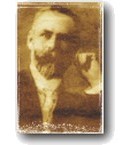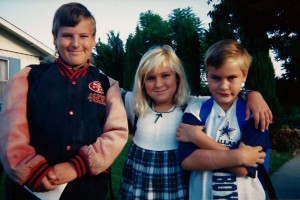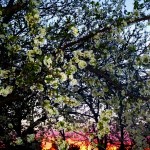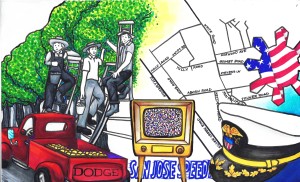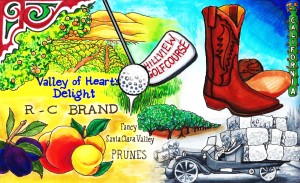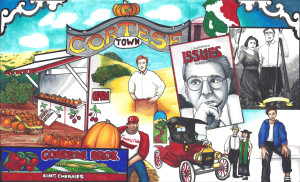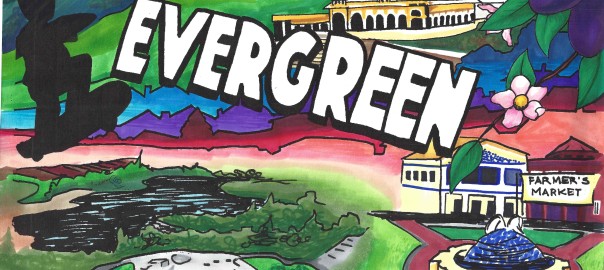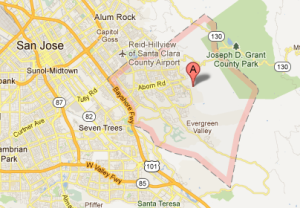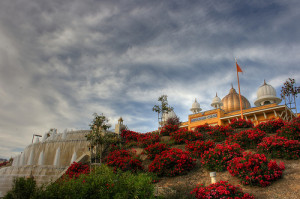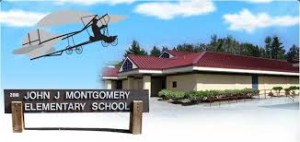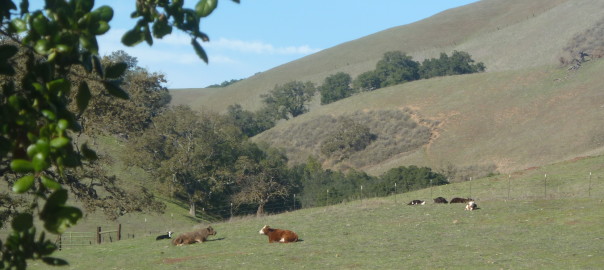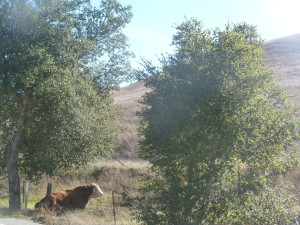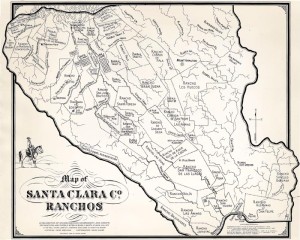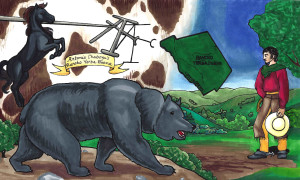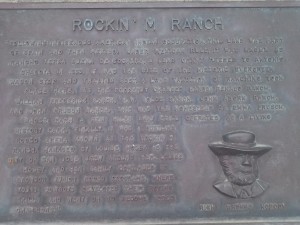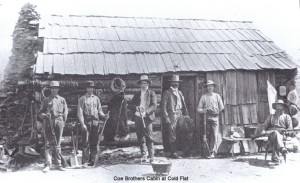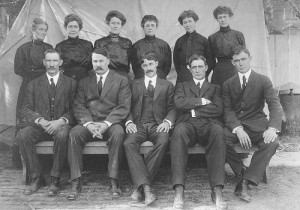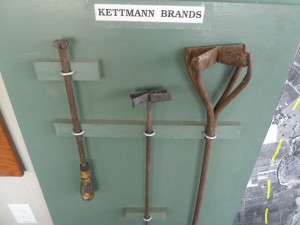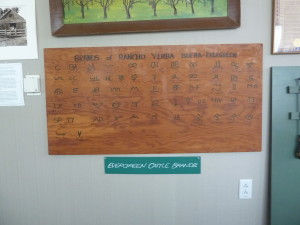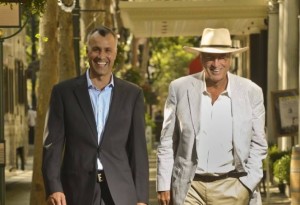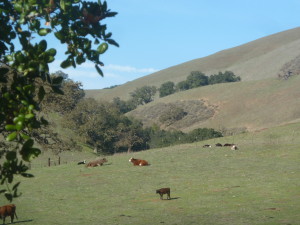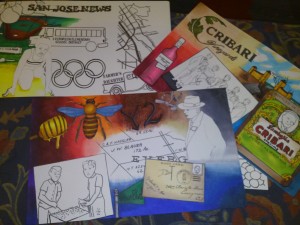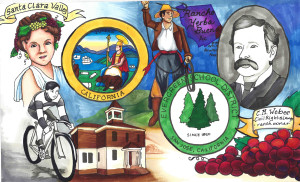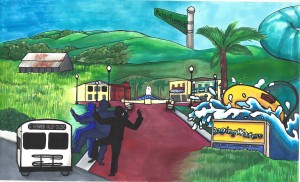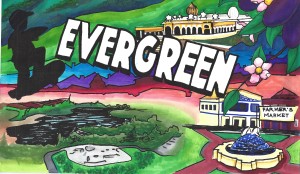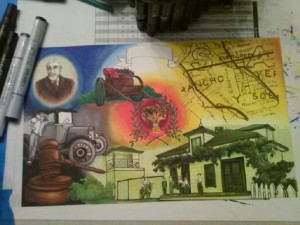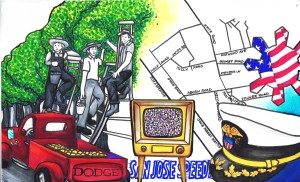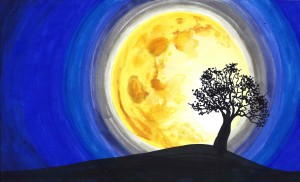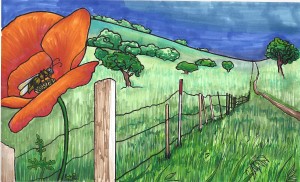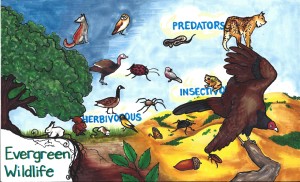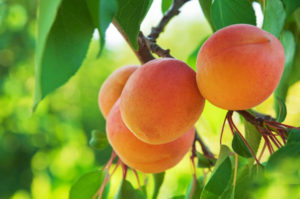 In discussing what makes Evergreen what it is today, I kept being asked about the variety of fruit shown in the proposed artwork. Almost every interviewee asked me why I was showing love to all the fruit picked here. We have vineyards associated with Evergreen, for sure. My parents kept telling us that they moved in across from apricot orchards and the houses were built when we were too young to remember. The majority of orchards in Evergreen were apricots.
In discussing what makes Evergreen what it is today, I kept being asked about the variety of fruit shown in the proposed artwork. Almost every interviewee asked me why I was showing love to all the fruit picked here. We have vineyards associated with Evergreen, for sure. My parents kept telling us that they moved in across from apricot orchards and the houses were built when we were too young to remember. The majority of orchards in Evergreen were apricots.
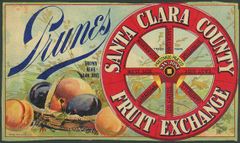 Barry Swenson, Evergreen Native and Downtown Developer, recalls the school schedule coinciding with harvest schedules. “Cot” Season would be from July to August, prune harvest following that before school would resume. Prunes were a big business in the Valley of Heart’s Delight with 80,000 acres of prune trees. Apricots would come in second with some 7,000 acres of trees. Farming families would raise huge farms and huge families to cultivate the rich Evergreen soil. Harvest time was a community event. Families, companies and neighbors all pitched in to pick fruit and harvest grain.
Barry Swenson, Evergreen Native and Downtown Developer, recalls the school schedule coinciding with harvest schedules. “Cot” Season would be from July to August, prune harvest following that before school would resume. Prunes were a big business in the Valley of Heart’s Delight with 80,000 acres of prune trees. Apricots would come in second with some 7,000 acres of trees. Farming families would raise huge farms and huge families to cultivate the rich Evergreen soil. Harvest time was a community event. Families, companies and neighbors all pitched in to pick fruit and harvest grain.
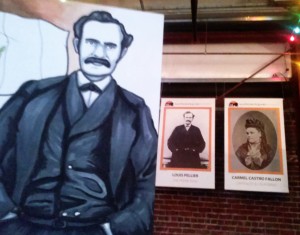 I bet you’re asking: “What’s the prune got that the apricot doesn’t?”
I bet you’re asking: “What’s the prune got that the apricot doesn’t?”
Luis Pellier’s small Agen prune / plum cions would make him famous once successfully grafted or implanted onto a natural wild California plum tree. He’s often called the father of the “California Fruit Industry.” The prune was successfully marketed as “Fine to Dry”, though the prune would need to be hastened through a boiling or dipping process. Prunes as a crop were much easier to harvest than apricots, so they were an attractive investment. Santa Clara County would grow up around prune orchards and packing factory all thanks to Pellier. The Apricot didn’t have a fancy PR campaign and wasn’t so easily dried and exported.
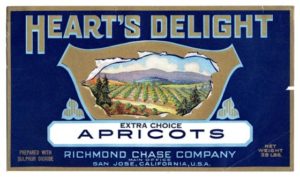 Canned apricots are totally cool and were popular. I certainly remember eating them as a kid. They would still play second fiddle in the Santa Clara Valley to the prune. In the later half of the 1800’s though, that dried prune had the country captivated. Dried fruit to export was a new thing. Canned fruit had been around for a little while as the primary way of exporting fruit long distances. In fact, there weren’t can openers when Evergreen fruit started going into cans. Railroads would be the only way to get fresh fruit out of the Santa Clara Valley. Into the 1900’s, Evergreen Packer, Edmund N. Richmond and the Richmond-Chase Company would be one of those canners using Evergreen harvested apricots.
Canned apricots are totally cool and were popular. I certainly remember eating them as a kid. They would still play second fiddle in the Santa Clara Valley to the prune. In the later half of the 1800’s though, that dried prune had the country captivated. Dried fruit to export was a new thing. Canned fruit had been around for a little while as the primary way of exporting fruit long distances. In fact, there weren’t can openers when Evergreen fruit started going into cans. Railroads would be the only way to get fresh fruit out of the Santa Clara Valley. Into the 1900’s, Evergreen Packer, Edmund N. Richmond and the Richmond-Chase Company would be one of those canners using Evergreen harvested apricots.
 Not until San Felipe Ranch owner, Henry W. Coe for which the largest State Park is named, changed the drying process did apricots take off. Apricots sun-dried and pitted without any treatment get really sweet but black in color. That’s a difficult product to get to sell. Henry W. Coe perfected the apricot drying system with a sulfur smoke which preserved the color and the golden apricot embraced as a fine dried fruit. Coe was a business man using his back East, New York connections. His exports and products may have inspired the “Heart’s Delight” knick name by the rest of the Country. Importing and exporting was Henry Coe’s strength and he was first to market with the dried apricot.
Not until San Felipe Ranch owner, Henry W. Coe for which the largest State Park is named, changed the drying process did apricots take off. Apricots sun-dried and pitted without any treatment get really sweet but black in color. That’s a difficult product to get to sell. Henry W. Coe perfected the apricot drying system with a sulfur smoke which preserved the color and the golden apricot embraced as a fine dried fruit. Coe was a business man using his back East, New York connections. His exports and products may have inspired the “Heart’s Delight” knick name by the rest of the Country. Importing and exporting was Henry Coe’s strength and he was first to market with the dried apricot.
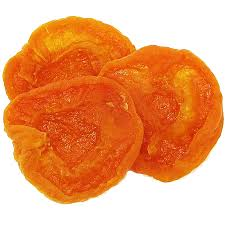 It turns out that back East, people loved golden apricots and may have gotten over the whole prune fad. The dried ‘cot was new and hip. The farmers across the Town of Evergreen would be blanketed with thousands of acres of apricot orchards. In 1914, 600,000 apricot trees were recorded in Santa Clara County, most of those planted in Evergreen. In the early 1900’s, the apricot industry would improve in Evergreen. German-American farmer, Mr. Emil Farhner, would figure out that cutting the apricot in half, not just pit them, would hasten drying as well as prevent blackening and reduce drying error.
It turns out that back East, people loved golden apricots and may have gotten over the whole prune fad. The dried ‘cot was new and hip. The farmers across the Town of Evergreen would be blanketed with thousands of acres of apricot orchards. In 1914, 600,000 apricot trees were recorded in Santa Clara County, most of those planted in Evergreen. In the early 1900’s, the apricot industry would improve in Evergreen. German-American farmer, Mr. Emil Farhner, would figure out that cutting the apricot in half, not just pit them, would hasten drying as well as prevent blackening and reduce drying error.
 The dried golden apricot technique was perfected here in Evergreen. The delicious snack quickly became a big hit across the country. Tons of the dried fruit were sent around the world, over 25,000 tons exported a year from Santa Clara County. Apricots became especially big business for the Evergreen orchardists. Eastside San Jose Fruit Growers Association would operate out of McLaughlin Road and Tully Road Headquarters until 1899 when it was acquired by California Prune and Apricot Growers, which eventually became SunSweet.
The dried golden apricot technique was perfected here in Evergreen. The delicious snack quickly became a big hit across the country. Tons of the dried fruit were sent around the world, over 25,000 tons exported a year from Santa Clara County. Apricots became especially big business for the Evergreen orchardists. Eastside San Jose Fruit Growers Association would operate out of McLaughlin Road and Tully Road Headquarters until 1899 when it was acquired by California Prune and Apricot Growers, which eventually became SunSweet.
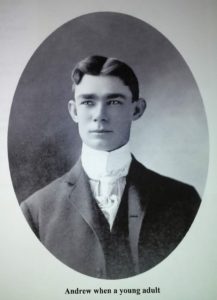 The dried ‘cot was so popular, the methods of harvest also needed to innovate to keep up with the demand. Prunes fell to the ground for harvest, where apricots had to be picked off the trees while on ladders. That can be a balancing act. An Evergreen Native would own the patent on the apricot picking bucket in 1920. Evergreen Native and youngest son of Gerhard Kettmann, for whom Kettmann Road is named, would invent a bucket that hung over the ladder rung, where tying the bucket would eventually dump the bucket or limit how many you could pick at a time. The apricot industry would really develop in Evergreen soil.
The dried ‘cot was so popular, the methods of harvest also needed to innovate to keep up with the demand. Prunes fell to the ground for harvest, where apricots had to be picked off the trees while on ladders. That can be a balancing act. An Evergreen Native would own the patent on the apricot picking bucket in 1920. Evergreen Native and youngest son of Gerhard Kettmann, for whom Kettmann Road is named, would invent a bucket that hung over the ladder rung, where tying the bucket would eventually dump the bucket or limit how many you could pick at a time. The apricot industry would really develop in Evergreen soil.
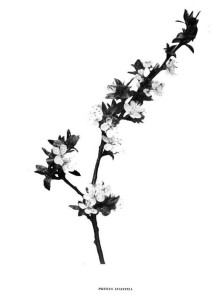 Back to that PR campaign the dried prune had, the apricot cions were brought with Spanish colonists through the El Camino Real and raised on the Mission lands. Mission of Santa Clara and Pueblo de San Jose were founded in 1777. Mission of San Jose would open its doors in 1797. That would date the apricots’ roots back in California before 1800.
Back to that PR campaign the dried prune had, the apricot cions were brought with Spanish colonists through the El Camino Real and raised on the Mission lands. Mission of Santa Clara and Pueblo de San Jose were founded in 1777. Mission of San Jose would open its doors in 1797. That would date the apricots’ roots back in California before 1800.
 The apricots were already here before the European immigrants and California Statehood. Spanish “Mission Grapes”, too, were also already around and probably the vines French cions would be grafted on to by Pellier. There were no printing presses to spread agricultural trends in the mid 1800’s. Some Santa Clara Valley farmers would witness the Industrial Revolution very personally and learn to adapt their machinery and techniques, like Andrew Kettmann.
The apricots were already here before the European immigrants and California Statehood. Spanish “Mission Grapes”, too, were also already around and probably the vines French cions would be grafted on to by Pellier. There were no printing presses to spread agricultural trends in the mid 1800’s. Some Santa Clara Valley farmers would witness the Industrial Revolution very personally and learn to adapt their machinery and techniques, like Andrew Kettmann.
A little trivia: When a apricot and a plum/prune have a baby, it’s called a pluot.
Another bit of trivia: All prunes are plums, but not all plums are prunes.
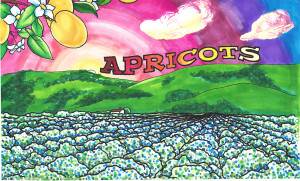 When people think of Evergreen, they think specifically of Apricots. I think that’s because of the frequency of “Cot” orchards in and around town. It’s not misplaced association, however. I don’t think people know how Evergreen apricots really are. The apricot was made perfect here by forward thinking farmers. The “Cot” is definitely an Evergreen thing.
When people think of Evergreen, they think specifically of Apricots. I think that’s because of the frequency of “Cot” orchards in and around town. It’s not misplaced association, however. I don’t think people know how Evergreen apricots really are. The apricot was made perfect here by forward thinking farmers. The “Cot” is definitely an Evergreen thing.
Here’s some of the artwork we have planned with ‘cots featured.
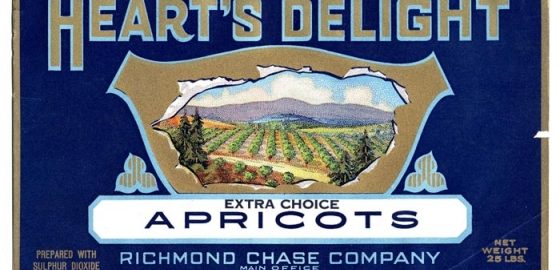
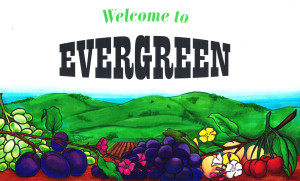
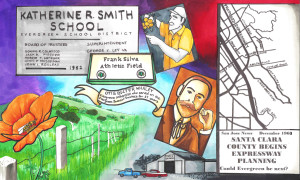
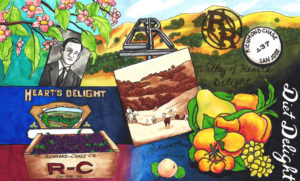
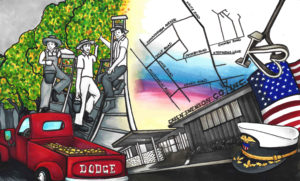
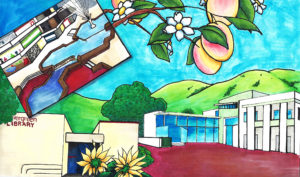
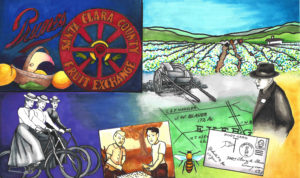
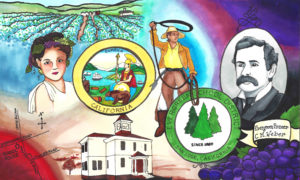
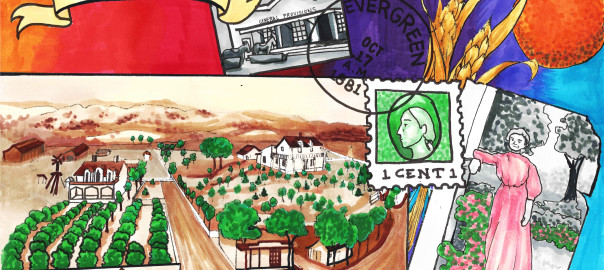
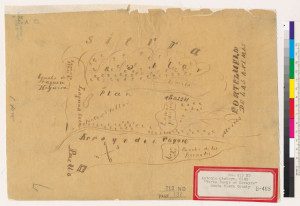

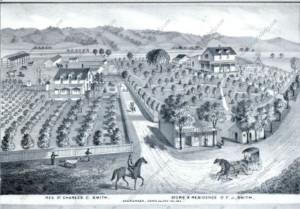
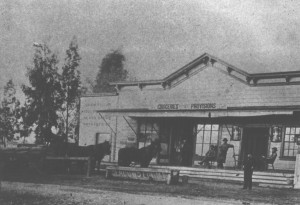
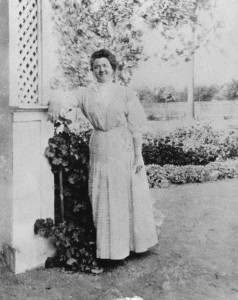
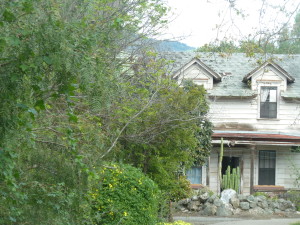
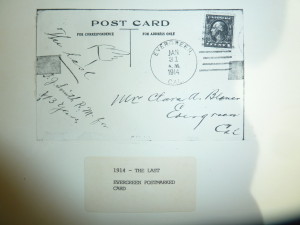
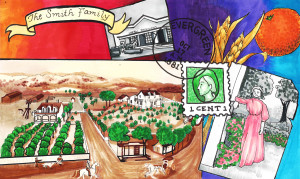
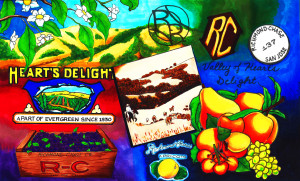
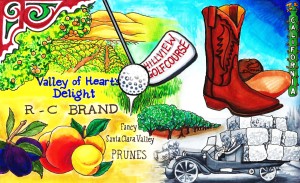
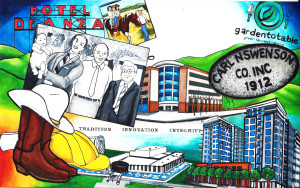
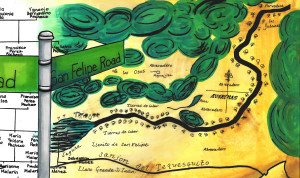
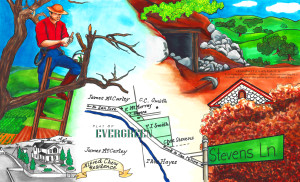
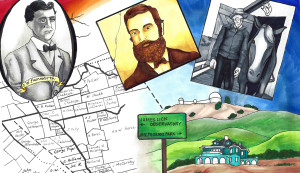
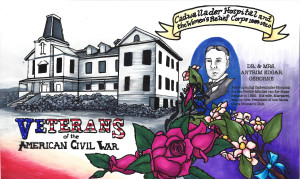
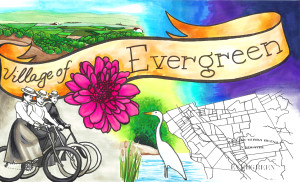
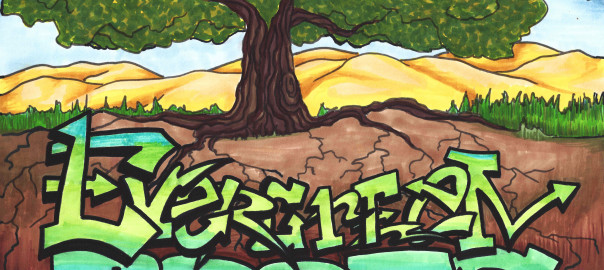
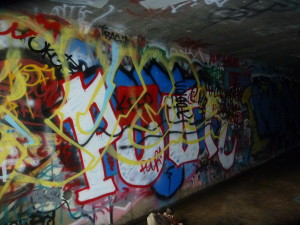
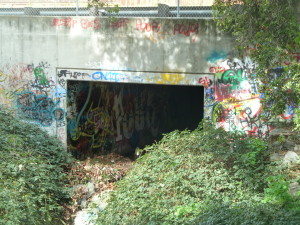
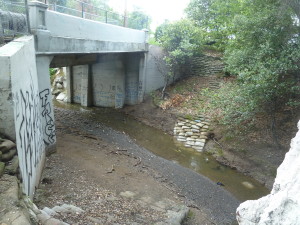
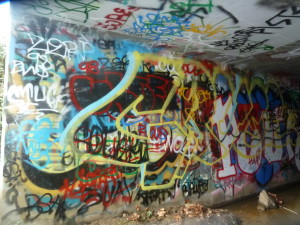
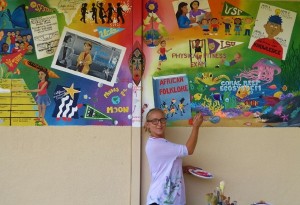
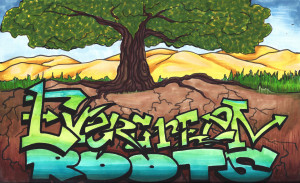
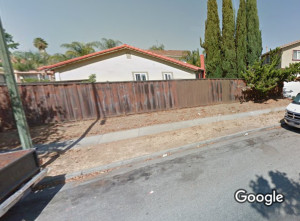
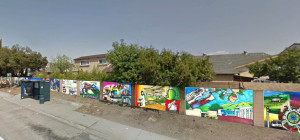



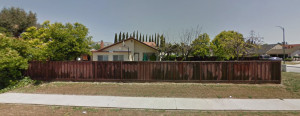
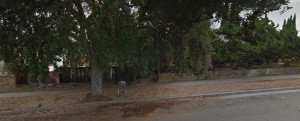

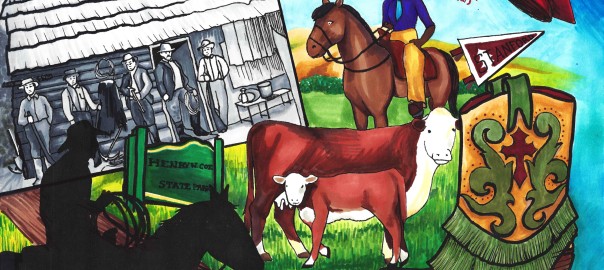

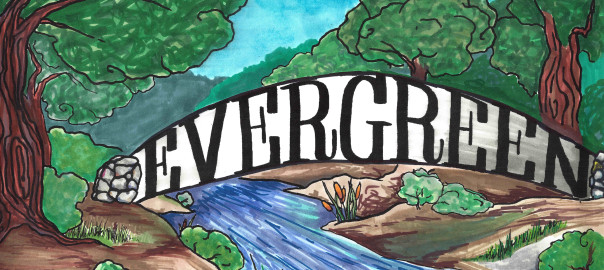
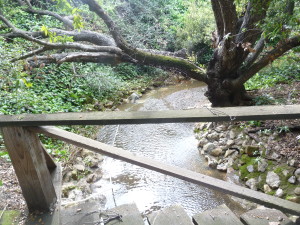

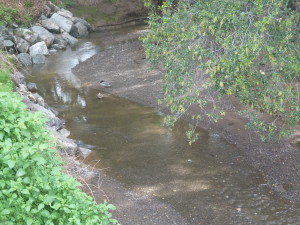
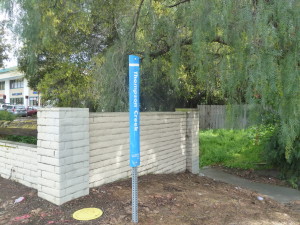
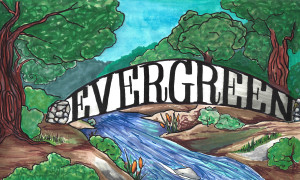
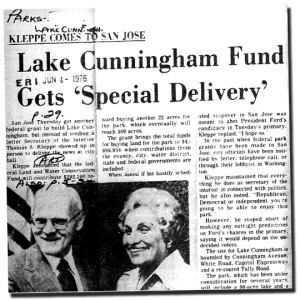
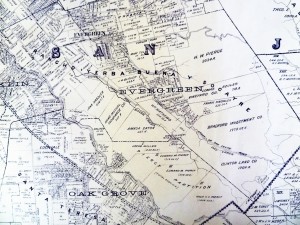
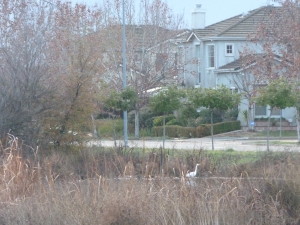
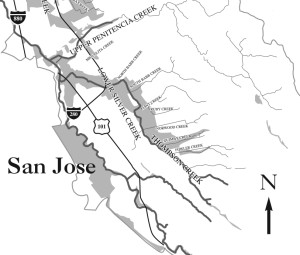
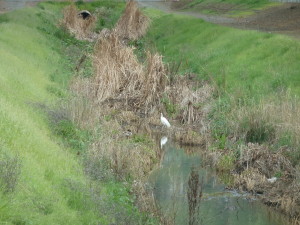
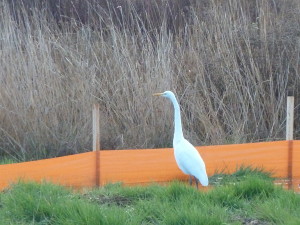
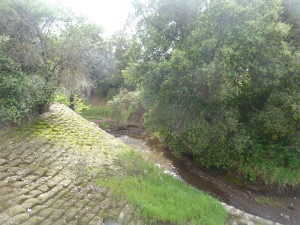
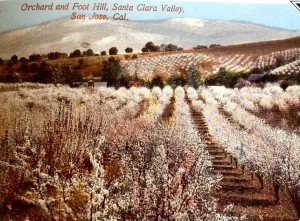
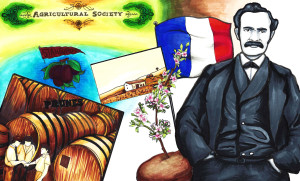
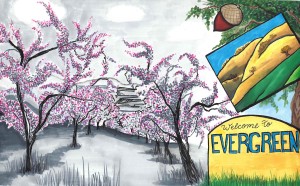
 The East Side Fruit Growers Association opened in 1893 off Tully Road and McLaughlin Road, serving as a trade association for local farmers across Evergreen and East San Jose. They would join a larger sales organization in 1899.
The East Side Fruit Growers Association opened in 1893 off Tully Road and McLaughlin Road, serving as a trade association for local farmers across Evergreen and East San Jose. They would join a larger sales organization in 1899.